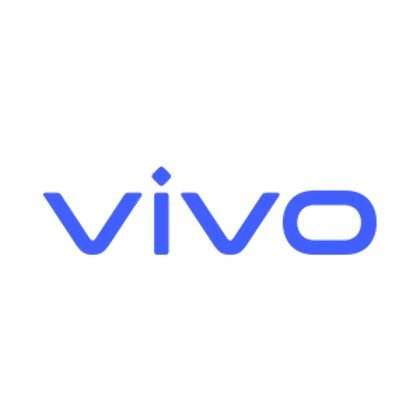
Artificial Intelligence (AI) has made significant strides in recent years, driven by advancements in machine learning, deep learning, and the availability of massive datasets. Two of the most transformative subfields of AI are Computer Vision (CV) and Natural Language Processing (NLP). These domains have enabled machines to interpret and understand both visual and textual data, unlocking new possibilities across industries such as healthcare, automotive, finance, entertainment, and more.
While Computer Vision and Natural Language Processing are both integral to the development of AI, they differ in their approaches, applications, techniques, and challenges. This article provides a comprehensive comparison of Computer Vision and Natural Language Processing, highlighting their unique characteristics, use cases, and future potential.
Understanding Computer Vision
Computer Vision is a field of AI that enables computers and systems to derive meaningful information from digital images, videos, and other visual inputs. It aims to replicate the human ability to see, understand, and interpret the visual world. The primary goal of Computer Vision is to automate tasks that the human visual system can perform, such as object recognition, image classification, facial recognition, and scene understanding.
Key Techniques in Computer Vision
Computer Vision relies on various techniques and algorithms to interpret visual data:
- Image Classification: This involves categorizing an image into a predefined class or label. For example, classifying an image as a “cat,” “dog,” or “car.” Deep learning models, particularly Convolutional Neural Networks (CNNs), have achieved remarkable success in this domain.
- Object Detection: Object detection not only identifies objects within an image but also provides their precise location through bounding boxes. Techniques such as YOLO (You Only Look Once) and Faster R-CNN (Region-based Convolutional Neural Network) are commonly used for object detection tasks.
- Semantic Segmentation: This technique involves classifying each pixel in an image into a category. It is useful for applications where precise localization of objects within an image is necessary, such as medical image analysis.
- Facial Recognition: Used extensively in security and surveillance, facial recognition identifies and verifies individuals by analyzing facial features. It employs a combination of feature extraction, face alignment, and deep learning algorithms.
- Image Generation: Generative Adversarial Networks (GANs) are employed to create realistic images from random noise or existing data, enabling applications like image synthesis, style transfer, and super-resolution.
- Optical Character Recognition (OCR): This technique extracts text from images or scanned documents, converting it into machine-readable text. OCR is used in various applications, from digitizing printed texts to reading license plates.
Applications of Computer Vision
Computer Vision has diverse applications across multiple industries:
- Autonomous Vehicles: Computer Vision is crucial for self-driving cars, where it enables the detection of road signs, pedestrians, vehicles, and other obstacles in real-time.
- Healthcare: In medical diagnostics, Computer Vision assists in analyzing medical images, such as X-rays, MRIs, and CT scans, to detect anomalies, tumors, and diseases.
- Retail: Computer Vision powers facial recognition payment systems, automated checkouts, and inventory management by analyzing video feeds and images.
- Manufacturing: Quality control in manufacturing processes relies heavily on Computer Vision to detect defects and ensure products meet standards.
- Agriculture: Drones equipped with Computer Vision algorithms monitor crop health, detect pests, and assess soil conditions.
- Security and Surveillance: Computer Vision is widely used for facial recognition, behavior analysis, and anomaly detection in security applications.
Understanding Natural Language Processing (NLP)
Natural Language Processing (NLP) is a branch of AI focused on enabling machines to understand, interpret, and generate human language. The primary objective of NLP is to bridge the communication gap between humans and machines by allowing computers to process and analyze large amounts of natural language data, such as text and speech.
Key Techniques in NLP
NLP involves various techniques and models to handle textual data:
- Text Classification: This technique involves assigning predefined categories to text data. Applications include spam detection, sentiment analysis, and topic categorization.
- Named Entity Recognition (NER): NER identifies and categorizes entities in text, such as names, dates, locations, and organizations. It is essential for information extraction tasks.
- Machine Translation: This is the process of translating text from one language to another. Techniques such as Neural Machine Translation (NMT) and Transformer models like BERT and GPT have significantly improved translation accuracy.
- Sentiment Analysis: Sentiment analysis determines the emotional tone behind a body of text. It is widely used in marketing, customer feedback analysis, and social media monitoring.
- Text Summarization: Text summarization generates concise summaries of large documents or articles, preserving the key information. It can be done through extractive or abstractive methods.
- Question Answering: This involves building systems that can understand questions posed in natural language and provide accurate answers based on a given dataset or context.
- Language Generation: Models like OpenAI’s GPT (Generative Pre-trained Transformer) are used to generate human-like text based on given prompts, enabling applications such as chatbots, content creation, and automated reporting.
Applications of Natural Language Processing
NLP has a broad range of applications, including:
- Chatbots and Virtual Assistants: NLP powers conversational agents like Apple’s Siri, Google Assistant, and Amazon Alexa, enabling them to understand and respond to user queries.
- Sentiment Analysis: Businesses use NLP to gauge public sentiment about their products, services, or brands on social media and other platforms.
- Content Moderation: NLP algorithms detect and filter inappropriate or harmful content on social media platforms, forums, and websites.
- Translation Services: Google Translate and similar services use NLP to provide real-time language translation.
- Healthcare: NLP processes unstructured clinical notes and electronic health records, assisting in diagnosing diseases, predicting patient outcomes, and automating administrative tasks.
- Financial Services: NLP is used in fraud detection, market sentiment analysis, and automated customer service in the financial industry.
Key Differences Between Computer Vision and Natural Language Processing
While both Computer Vision and Natural Language Processing are subfields of AI, they differ in several fundamental ways:
1. Nature of Input Data
- Computer Vision: Works with visual data such as images and videos, where data is in the form of pixels and has spatial relationships.
- NLP: Deals with textual data, where the input consists of words, sentences, and paragraphs. Text data is sequential and involves syntactic, semantic, and contextual relationships.
2. Techniques and Algorithms
- Computer Vision: Primarily relies on deep learning models, especially Convolutional Neural Networks (CNNs), for tasks like image classification, object detection, and segmentation.
- NLP: Uses a range of techniques, from traditional rule-based systems and statistical models to deep learning architectures like Recurrent Neural Networks (RNNs), Transformers, and attention-based models.
3. Output and Interpretation
- Computer Vision: The output is often visual in nature, such as bounding boxes around objects, segmented images, or reconstructed images. The challenge lies in interpreting visual patterns and context.
- NLP: The output is text or structured data derived from text. The challenge lies in understanding context, ambiguity, and the nuances of human language.
4. Challenges and Limitations
- Computer Vision: Struggles with occlusion, variations in lighting, angles, and object deformation. It also requires large labeled datasets for training and may have difficulty in generalizing across different visual domains.
- NLP: Faces challenges such as ambiguity, context sensitivity, sarcasm, and the diversity of languages and dialects. NLP models also require vast datasets to learn the intricacies of language.
5. Real-Time Applications
- Computer Vision: Real-time applications include autonomous vehicles, surveillance, and augmented reality. These require high computational power and low-latency processing.
- NLP: Real-time applications like chatbots, virtual assistants, and sentiment analysis demand quick and accurate processing of text data. NLP models also need to handle natural language diversity in real-time.
Similarities Between Computer Vision and NLP
Despite their differences, Computer Vision and NLP share some similarities:
- Data-Driven Approaches: Both fields heavily rely on data-driven machine learning approaches. Deep learning techniques, particularly neural networks, are central to both domains.
- Applications of Transfer Learning: Transfer learning, where a pre-trained model is adapted to a new but related task, is widely used in both fields. For example, pre-trained language models (like BERT) and image recognition models (like ResNet) can be fine-tuned for specific applications.
- Interdisciplinary Impact: Both fields have applications that extend across various sectors, including healthcare, finance, entertainment, and more.
- Open Research Challenges: Both Computer Vision and NLP are areas of active research with many unsolved problems. Researchers continuously strive to improve model accuracy, robustness, and efficiency.
The Convergence of Computer Vision and NLP: Multimodal AI
An emerging trend in AI is the convergence of Computer Vision and NLP, resulting in multimodal AI systems that can process and understand multiple types of data simultaneously. These systems combine visual and textual information to create more robust and intelligent models.
1. Visual Question Answering (VQA)
Visual Question Answering is an example where AI models must answer questions about the content of an image. This requires the integration of Computer Vision to analyze the image and NLP to understand the question and generate an appropriate response.
2. Image Captioning
Image captioning involves generating descriptive text for a given image. This application requires both Computer Vision to recognize objects, scenes, and actions within the image and NLP to generate coherent and contextually relevant descriptions.
3. Autonomous Systems
Self-driving cars represent a convergence of Computer Vision and NLP. While CV helps in detecting objects, pedestrians, and road signs, NLP is used for interpreting voice commands, understanding traffic updates, and integrating map data.
4. Enhanced Human-Computer Interaction
Combining Computer Vision and NLP enables more sophisticated human-computer interactions, such as virtual assistants that can recognize gestures, facial expressions, and spoken language simultaneously, providing a more intuitive and engaging user experience.
Future Prospects and Trends
Both Computer Vision and NLP are rapidly evolving fields with tremendous potential:
- Computer Vision: With advancements in deep learning, edge computing, and hardware acceleration, Computer Vision is poised to revolutionize industries such as healthcare, autonomous driving, and augmented reality. The integration of quantum computing and neuromorphic chips could further enhance CV capabilities.
- NLP: The future of NLP will likely see more powerful language models, better understanding of context and nuance, and greater cross-lingual capabilities. As models like GPT-4o advance, they will provide even more human-like text generation and comprehension.
- Multimodal AI: The convergence of CV and NLP into multimodal AI will continue to grow, with applications in robotics, interactive AI, content creation, and more. This trend will be driven by the need for AI systems that understand and interact with the world more holistically.
Conclusion: Two Pillars of AI with Unique Roles and Synergies
Computer Vision and Natural Language Processing represent two of the most critical pillars of artificial intelligence, each with its own set of techniques, applications, and challenges. While they operate in different domains, their convergence is paving the way for more comprehensive and capable AI systems. As these fields continue to evolve, they will undoubtedly bring about transformative changes across all sectors, enhancing our interactions with technology and expanding the boundaries of what machines can achieve.
ALSO READ: Apple Unveils Fourth-Generation AirPods









